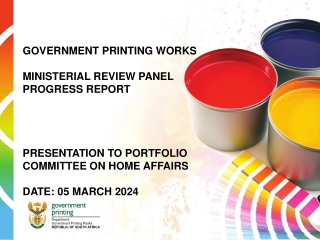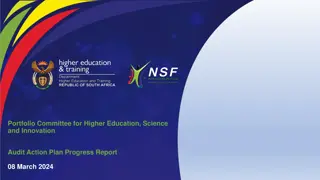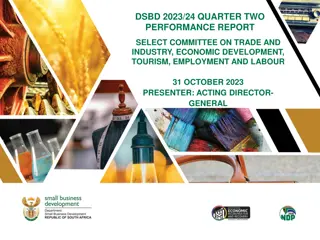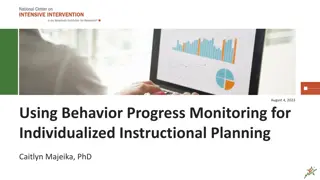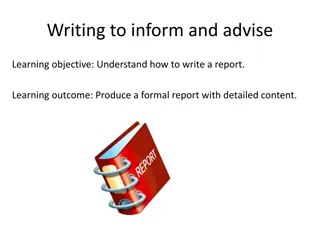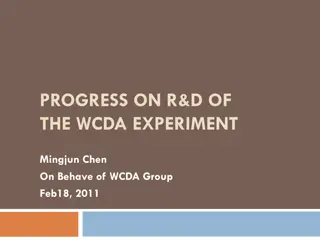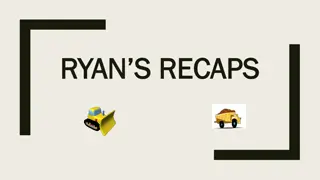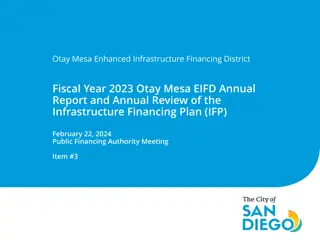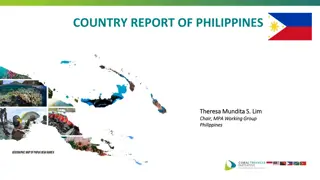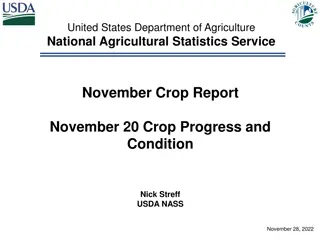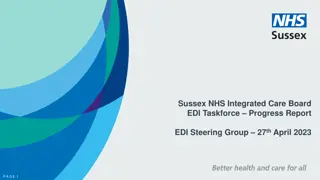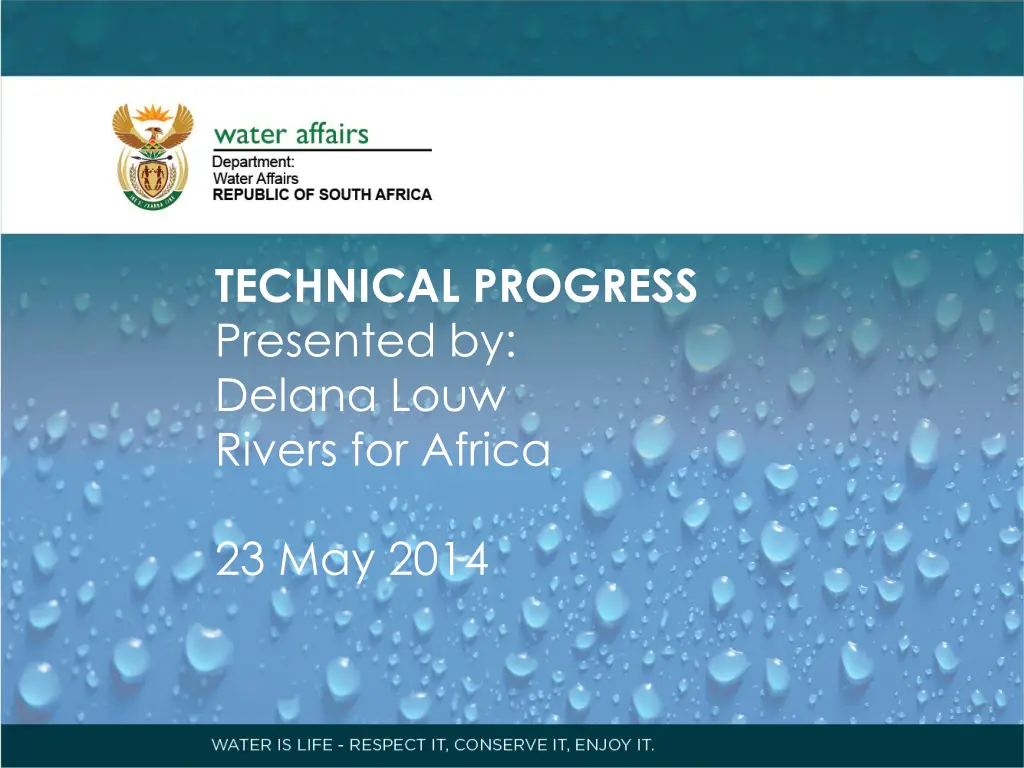
Technical Progress and Project Plan Overview
Discover the technical progress and project plan presented by Delana Louw, focusing on key tasks such as quantifying EWRs and evaluating scenarios in Integrated Water Resources Management (IWRM). Follow the process to determine Management Classes and make informed recommendations based on stakeholder input.
Download Presentation

Please find below an Image/Link to download the presentation.
The content on the website is provided AS IS for your information and personal use only. It may not be sold, licensed, or shared on other websites without obtaining consent from the author. If you encounter any issues during the download, it is possible that the publisher has removed the file from their server.
You are allowed to download the files provided on this website for personal or commercial use, subject to the condition that they are used lawfully. All files are the property of their respective owners.
The content on the website is provided AS IS for your information and personal use only. It may not be sold, licensed, or shared on other websites without obtaining consent from the author.
E N D
Presentation Transcript
TECHNICAL PROGRESS Presented by: Delana Louw Rivers for Africa 23 May 2014
PROJECT PLAN & STUDY TASKS Complete In process TECHNICAL STEPS 1. Status quo, IUA delineation OTHER STEPS 2b Stakeholder process 3. Quantify EWRs 8. Capacity Building 2a Visioning 8. Gazetting 4. ID & evaluate scenarios in IWRM 5. Evaluate scenarios with stakeholders and determine MC 6. RQO
STEP 1: STATUS QUO & IUA DELINEATION Task completed. Purpose of task is to select homogenous areas that can be managed as an entity (IUA), and to determine the status quo of the IUAs, and 1. Status quo, IUA delineation 3. Quantify EWRs 4. ID & evaluate scenarios in IWRM to determine hotspots to prioritise the RUs for RQOs amongst others. The output in essence is a sustainable base configuration that equates to the present state. Changes in this status are measured when evaluating operational scenarios within IWRM (Step 4). 29 IUAs identified, each with nodes.
STEP 3: QUANTIFY EWRS AND LINKS TO ECOSYSTEM SERVICES Purpose of task is to determine EWRs at each biophysical node. Output is EWRs as flow duration tables for each node All river and estuary surveys have been undertaken Hydrological modelling for all river nodes completed During previous meeting: Detailed EWRs presented at 5 EWR sites. In this meeting: EWRs at 158 desktop biophysical nodes presented: Report has been distributed for comment. EWRs at 7 detailed EWR sites presented. Report to be distributed end July. Above report only outstanding item of task. 1. Status quo, IUA delineation 3. Quantify EWRs 4. ID & evaluate scenarios in IWRM
STEP 4 & 5: ID AND EVALUATE SCs WITHIN IWRM 1. Status quo, IUA delineation First task: Determine preliminary operational scenarios and test with stakeholders. 3. Quantify EWRs 4. ID & evaluate scenarios in IWRM Next: Determining consequences of scenarios: River, estuary, economics, ecosystem services, yield. Ranking scenarios 5. Evaluate scenarios with stakeholders and determine MC Make study team recommendation, Take consequences and draft MC to stakeholders
RECAP OF PROCESS TO DETERMINE MC Determine Status Quo Identify operational scenarios User water quality consequences EcoSystem Services consequences Economic consequences Determine EWR Ecological consequences CHANGE FROM STATUS QUO? (PREDICT CONSEQUENCES) Draft Select future operational scenario Management Classes for each Scenario MANAGEMENT CLASS
RECAP OF PROCESS TO DETERMINE MC Test scenarios and associated MC with stakeholders Select scenario and draft MC Consider trade- offs Recommended MC DWA decision RQOs for MC Gazetting process MC (& CATCHMENT CONFIGURATION) & RQOs GAZETTED


